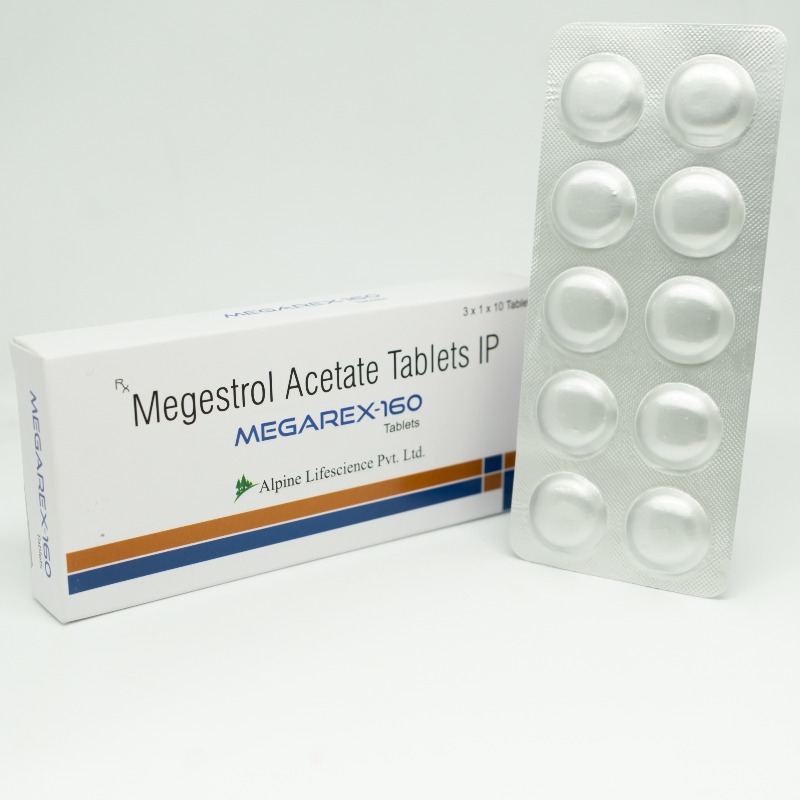DESCRIPTION
Mechanism of Action
• Synthetic derivative of the naturally occurring steroid hormone progesterone.
• Possesses antiestrogenic effects. Induces the activity of
17-hydroxysteroid dehydrogenase, which then oxidizes estradiol to
the less active metabolite estrone. Also activates estrogen sulfatransferase,
which metabolizes estrogen to less potent metabolites.
• Inhibits release of luteinizing hormone receptors resulting in a
decrease in estrogen levels.
• Inhibits stability, availability, and turnover of estrogen receptors.
Mechanism of Resistance
None known.
Absorption
Rapidly and completely absorbed after an oral dose. Peak plasma concentration
is reached within 1–3 hours after oral administration.
Distribution
Large fraction of megestrol is distributed into body fat.
Metabolism
About 70% of drug is metabolized in the liver to inactive steroid metabolites.
The drug is primarily eliminated in urine in the form of parent drug and
metabolites, and 60%–80% of the drug is renally excreted within 10 days after
administration. Elimination half-life is quite variable and ranges from 15 to 105
hours with a mean of 34 hours.
Indications
1. Breast cancer.
2. Endometrial cancer.
3. Renal cell cancer.
4. Appetite stimulant in cancer and HIV patients.
Dosage Range
1. Breast cancer: 40 mg PO qid.
2. Endometrial cancer: 40 mg PO qid.
3. Appetite stimulant: 80–200 mg PO qid.
Drug Interactions
Aminoglutethimide—Aminoglutethimide enhances the hepatic metabolism
of megestrol, resulting in decreased serum levels.
Special Considerations
1. Use with caution in patients with either a history of thromboembolic
or hypercoagulable disorders as megestrol acetate has been associated
with an increased incidence of thromboembolic events.
2. Use with caution in patients with diabetes mellitus, as megestrol
may exacerbate this condition.
3. Use with caution in patients with abnormal liver function. Dose
reduction is recommended in this setting.
4. Caution patients on the risk of weight gain and fluid retention.
Patients should be advised to go on a low-salt diet.
5. Pregnancy category D. Breastfeeding should be avoided.
Toxicity 1
Weight gain results from a combination of fluid retention and increased
appetite.
Toxicity 2
Thromboembolic events are rarely observed.
Toxicity 3
Nausea and vomiting.
Toxicity 4
Breakthrough menstrual bleeding.
Toxicity 5
Tumor flare.
Toxicity 6
Hyperglycemia.
Toxicity 7
Hot flashes, sweating, and mood changes.
SPECIFICATION
Classification
Progestational agent
Category
Hormonal agent


Login To Comment